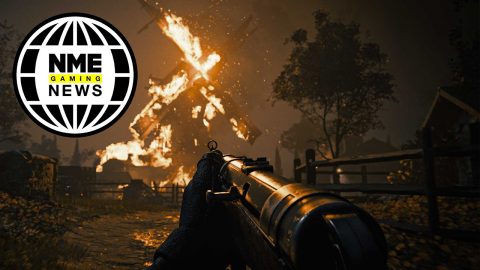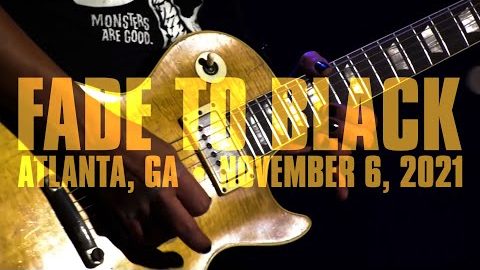
Magic: The Gathering was originally released by Wizards of the Coast in 1993 as a head-to-head competitive game, with two players building 60-card decks filled with spells, creatures, and artifacts designed to take their opponent from 20 to zero life as quickly as possible. But fans quickly began developing their own ways of playing more casual games, coming up with restrictions like only using only common cards or giving every player unlimited mana — the resource needed to play most cards.
- READ MORE: Peter McConnell takes us through the process of composing the mental worlds of ‘Psychonauts 2’
One variation became so popular that it transitioned from a house rule to a core component of modern Magic: The Gathering design. Players can only have one of a specific named character or legendary creature on the board at a time, a rule that was introduced with the printing of five powerful Elder Dragon Legends in the 1994 set Legends. While the origin of the idea is somewhat disputed, creative players suggested extending the rule to every card in a Magic deck so that instead of the usual limit of four of a specific card there could be only one.
Deck sizes were expanded from 60 cards to 100, life totals were doubled to 40, and more players were welcomed into a game. The format was originally dubbed Elder Dragon Highlander, a fusion of the legendary cards and a tribute to the line “there can be only one” spoken repeatedly in the 1986 film Highlander about immortals decapitating each other in their own version of a battle royale.

The format is also referred to as Commander, a reference to the other key rules difference. Every deck is built around a specific legendary creature called a Commander that doesn’t have to be drawn like a normal card but can instead be played from a special “command zone” any time players have the mana for it, though its cost increases every time it’s cast. Magic: The Gathering senior game designer Glenn Jones says the combination of consistency provided by the command zone with the randomness of having a large deck of unique cards has helped make Commander the game’s most popular format.
“You can play Magic for a really long time and have a lot of different experiences,” he says. “Commander really encapsulates that in a lot of ways.”
As a multiplayer, casual game, Commander also helps provide a more social experience than traditional Magic formats you might play in a tournament.
“I think one of the things that we’ve learned about games in general over the last 60-plus years is that multiplayer games can really get a lot of people involved in a way that a one vs. one competitive affair can’t,” Jones says. “Commander is one of the few Magic formats where that’s really encouraged as well as directly rewarded.”

While the goal is to be the last person standing at the end of a game, having multiple opponents allows players to make temporary alliances while also forcing them to carefully consider how to divide their resources. As the format has grown in popularity, Magic designers have begun developing new mechanics specifically for Commander.
“They’re quite difficult to design,” Jones says. “In an ideal world all the mechanics, even the ones that are multiplayer specific, have some kind of play or joy to them in single player formats.”
For instance, the 2016 set Conspiracy: Take the Crown introduced the concept of The Monarch, a title players get by casting specific cards. The Monarch gets to draw an extra card each turn — a huge advantage in the game — and some cards also have more powerful effects if you’re the Monarch. If a creature you control damages the current Monarch, you get the title.
“The Monarch is very different in a single-player format,” Jones says. “It’s not really built for it, but you can engage in it and it still has an interesting subgame for it.”

Sometimes the designers take existing mechanics like Unearth, which allows a player to replay a creature from their graveyard for one final attack, and tweak them to be better in multiplayer. The 2020 set Commander Legends introduced Encore, where players get a copy of the returning creature for every opponent. “We mined its strength in multiplayer to create something that Commander players would specifically enjoy,” Jones says.
Wizards of the Coast has released a steady stream of Commander-focused sets since 2011. Most involve preconstructed decks meant to allow easy introduction to the format or even the game itself. “It’s one of the most ideal entry points from a player’s perspective,” Jones says. “I get a box and I don’t have to do any more work. It’s full of rares and awesome cards and my friends will just tell me which ones to buy because they are really entrenched in the game and know what’s going on.”
Jones and other Commander-focused designers take their work on these decks very seriously because they know how much influence they can have.
“We want those preconstructed decks to not just be a good experience unto themselves but to also reflect the kind of gameplay experience that we think is fun in Commander and that players should go out and evangelise among their own friends and play group,” he says. “Someone who bought a preconstructed deck 10 years ago, whatever ideas they formed from that first game of Commander may still be guiding their play today.”

The decks are heavily tested against each other and other recently published decks to ensure a good power balance. “We always want it to be a good experience if someone brings home all of the decks and then just plays,” Jones says. “If one deck is starting to bully the others around, we’ll try and hit it in some spots where it doesn’t damage the appeal but seems fair.”
As the format has grown in popularity, Wizards of the Coast has worked hard to understand the people that play it and design products meant to appeal to them. “Early on there were people who thought that Commander players were just sticking to one deck, but now that we’ve developed better insights, we realize that’s not true at all,” Jones says. “Commander players love to build new decks. They love to improve the decks they already have. They’re actually very deeply engaged in new content, and that’s great.”
While most new sets are primarily designed for people to play competitively by either constructing their own decks or drafting them, designers now consider what a Commander player might get out of it. The game now has more legendary creatures and more multicolour cards, since the colour of your commander determines what colours the rest of your cards can be. Designers have also worked to introduce the format to new players with Commander Legends, the first Commander set meant to be drafted. It might not be what the creators of Magic originally had in mind, but Commander gives players a whole new way to have fun with the collectable card game.
“Commander marries the elements of Magic together in a really interesting way that people can engage with and express themselves and what they like about Magic,” Jones says. “It’s about building a cool deck, showing it off and having a cool experience.”
Samantha Nelson is a freelance journalist and regular contributor to NME.
The post A fan-made format has changed the way ‘Magic: the Gathering’ sets are developed appeared first on NME.






